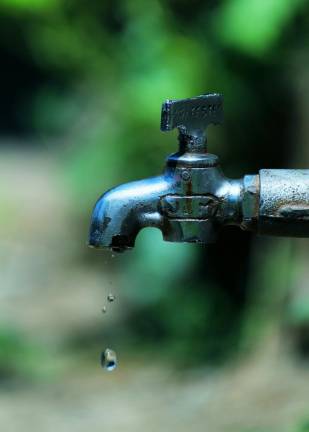Drought Task Force maintains drought watch status for all of Pennsylvania
Water conservation. While not required, residents and non-farm businesses are encouraged to voluntarily conserve water by reducing their nonessential water use.

The Pennsylvania Department of Environmental Protection (DEP) will maintain a statewide drought watch, following a meeting of the Commonwealth Drought Task Force late last week.
While not required, residents and non-farm businesses are encouraged to voluntarily conserve water by reducing their nonessential water use.
At this time, 18 public water suppliers are asking for voluntary water conservation in their communities.
How drought declarations are made
Drought watch declarations are not based on one indicator alone, such as precipitation. DEP assesses information provided by public water suppliers and data on four hydrologic indicators: precipitation, surface water (stream and river) flow, groundwater level and soil moisture. While the recent rainfall has been welcome, there are still persistent precipitation deficits statewide. Persistent rain will be needed for more consistent meaningful improvement to groundwater levels.
DEP monitors the indicators in close partnership with the U.S. Geological Survey (USGS), which maintains gages in streams and wells in many locations across Pennsylvania.
There are normal ranges for all four indicators. DEP makes drought status recommendations after assessing departures from these ranges and comparing this information to historical data.
DEP provides data and recommendations to the state and federal agencies and other organizations that make up the Commonwealth Drought Task Force. Drought watch and warning declarations are determined by DEP, with the concurrence of the task force.
Drought emergency declarations follow the same process, with final approval by the governor. No county is in drought warning or emergency status at this time.
How to reduce water consumption
Residents and businesses are encouraged to reduce their nonessential water use. For example, at home there are many simple ways to use less water:
• Run the dishwasher and washing machine less often, and only with full loads.
• Don’t let the faucet run while brushing your teeth or shaving. Take shorter showers. For example, consider not washing your hair daily.
• Water your lawn only if necessary. Avoid watering on windy and hot days. Watering grass lightly and efficiently will encourage healthier, deeper grass roots. Overwatering is wasteful, encourages fungal growth and disease, and results in shallow, compacted root systems that are more susceptible to drought.
• When mowing your lawn, set the blades 2-3 inches high. Longer grass shades the soil, improving moisture retention.
• Water your garden less often. If necessary, water only in the cooler evening or morning hours, and direct the water to the ground at the base of the plant. Focus on new plantings, which have shallow root systems. Older plants may endure dry conditions longer.
• Skip the car washing. If you have to wash your car, it’s better environmentally to go to a drive-through car wash that recycles the water.
• Sweep your sidewalk, deck, or driveway, instead of hosing it off.
• Check for and repair household leaks. For example, a leaking toilet can waste up to 200 gallons of water daily.
• Set up a rain barrel to be ready to repurpose rain when it does fall. For helpful information, see this Penn State Extension guide. Or just set out a bucket to capture water in the event of rain, and reuse it to water plants or the bird bath.
For more tips for residents as well as fact sheets on how businesses such as lawn care services, landscapers, hotels, and restaurants can reduce water use, see the U.S. Environmental Protection Agency Drought and WaterSense web page.